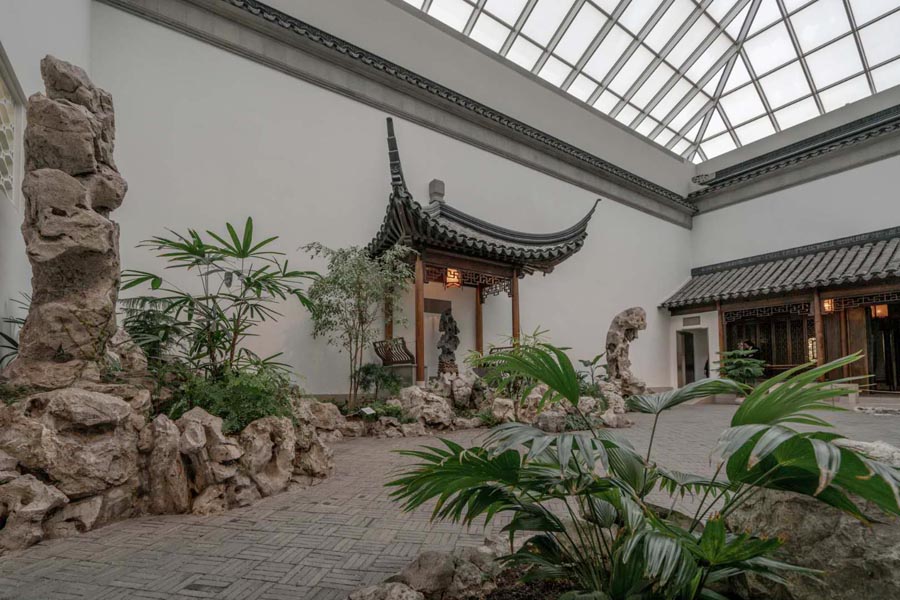 |
|
The Astor garden is modeled on a Ming Dynasty scholar's garden.[PHOTO BY GAO TIANPEI/CHINA DAILY] |
Indeed there was one. Hearn pushed the buzzer. A little window opened and a man popped his head out.
"Before I knew it, I was ushered down the long corridor to the director's office," Hearn says. The next day Sickman personally unrolled for him the 11th century landscape painting he had asked in his letter to see.
"Then I thought: 'This is it. Being a museum curator and able to handle works of art is the most remarkable job in this world.'"
Over the past 40 years Hearn has repeated that movement of Sickman numerous times, each unrolling presenting its own revelations.
In 1971 the new convert Hearn then wrote to Wen Fong, the teacher of his teacher at Yale, and was granted a meeting a couple of months later.
"I remember him walking in in tennis white with a racket over his shoulder. Half an hour into our conversation, he asked, 'How would you like to work at the Metropolitan Museum?'"
Hearn reluctantly took the job-in the early '70s the Met's Chinese collection comprised mainly of a handful of ancient ceramics and Buddhist sculptures. But that would undergo big change, of which Hearn has been both a witness and an agent. Today the museum has 21 galleries of Chinese art.
Upon the completion of its Chinese painting galleries in 1991, John M. Crawford Jr., who in the 1950s had formed what Hearn called the most important private ensemble of Chinese painting and calligraphy in the West, came in for a look from his home across the street.